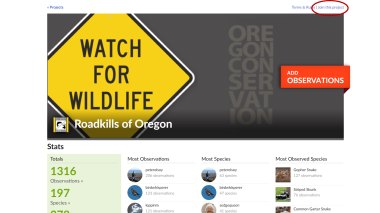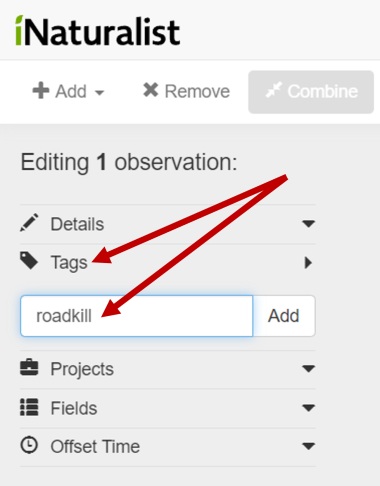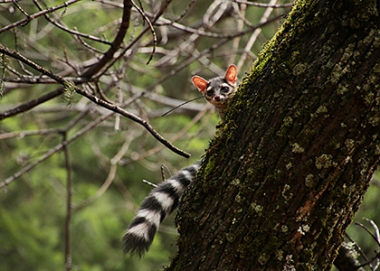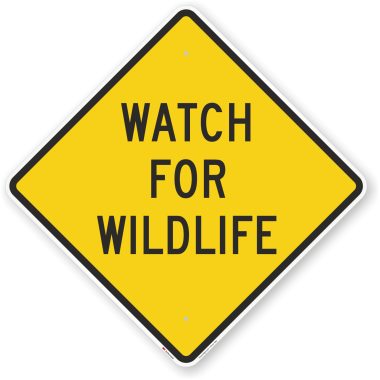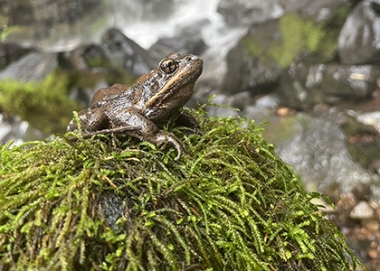
Roadkills of Oregon
The purpose of this project is to help us understand the impacts roads have on Oregon's wildlife, and to identify roadkill hot spots and vulnerabilities among different wildlife species. This information can help make roadways safer and reduce wildlife-vehicle collisions.
Roadways and vehicular traffic are a significant cause of injury and mortality to Oregon's wildlife. Wildlife species need to move across the landscape to access resources, including food, water, and shelter. Roadways crisscross and fragment wildlife habitat, making it more difficult for wildlife to safely move.
Almost all wildlife species in the state face some level of risk from roadways, and many thousands of animals – including mammals, birds, reptiles, amphibians, and insects – are killed each year by vehicles on Oregon's roads. You can help by documenting any roadkills you see using ODFW's Roadkills of Oregon iNaturalist project.
Make sure to document where you're taking the photo using a map, your phone's geotagging capability, or GPS. You don't need to know what animal you've seen before you upload your observation –the iNaturalist community can help you identify your photo. While the Roadkills of Oregon project is specifically focused on documenting road-killed wildlife, don't let that stop you from documenting the living things around you.
There are many other iNaturalist projects in Oregon, including the Oregon Wildlife Conservation project, that would benefit from your observations of other animals.
The following step-by-step guide will show you how to use the community science platform iNaturalist and how to share your wildlife observation data with the Roadkills of Oregon project.
1) Join iNaturalist & download the free app.
Navigate to the iNaturalist website, click on "Sign up" and follow the instructions to create an iNaturalist account.
Don't forget to download the app for adding observations with a mobile device in the field.
- For Apple devices.
- For Android devices.
If you're just beginning with iNaturalist, there is a helpful guide available on their getting started page.
2) Join the Roadkills of Oregon project on iNaturalist.
Once you've created an iNaturalist account, go to ODFW's Roadkills of Oregon project.
Click "Join this project" in the upper right corner.
3) Upload your observations to iNaturalist and add them to Roadkills of Oregon.
For guidance on how to add new observations to iNaturalist, see iNaturalist guidance for the mobile app and desktop application.
You can add data to the "Roadkills of Oregon" project each time you upload a roadkill observation.
If you haven't joined Roadkills of Oregon, adding tags to your observation, such as "roadkill", "dead on road", or "DOR" can help ensure the observations can be discovered and added to the project.
Documenting roadkills may be unpleasant—no one wants to see wildlife that way—but the Roadkills of Oregon project will collate data that will be used to help make our roadways safer, for both people and animals. It's an important mission and we can't do it alone!
What species are we looking for?
We're interested in roadkill observations for any species of wildlife along any of Oregon's many roads. You may be able to record observations while walking, biking, or driving through your neighborhood or city, along your commute, or while traveling throughout Oregon.
The more roadkill observations that are recorded in different areas of the state, the better we'll be able to understand where and when roadkills are more likely to occur. This can help inform actions to reduce wildlife mortality on roadways.
It's helpful to include additional comments with your roadkill observations. In particular, the sex of the individual specimen (male, female, or unknown) and information on life stage (adult, juvenile, or unknown) may be valuable.
Be safe when on the road. Please take precautions when documenting observations.

